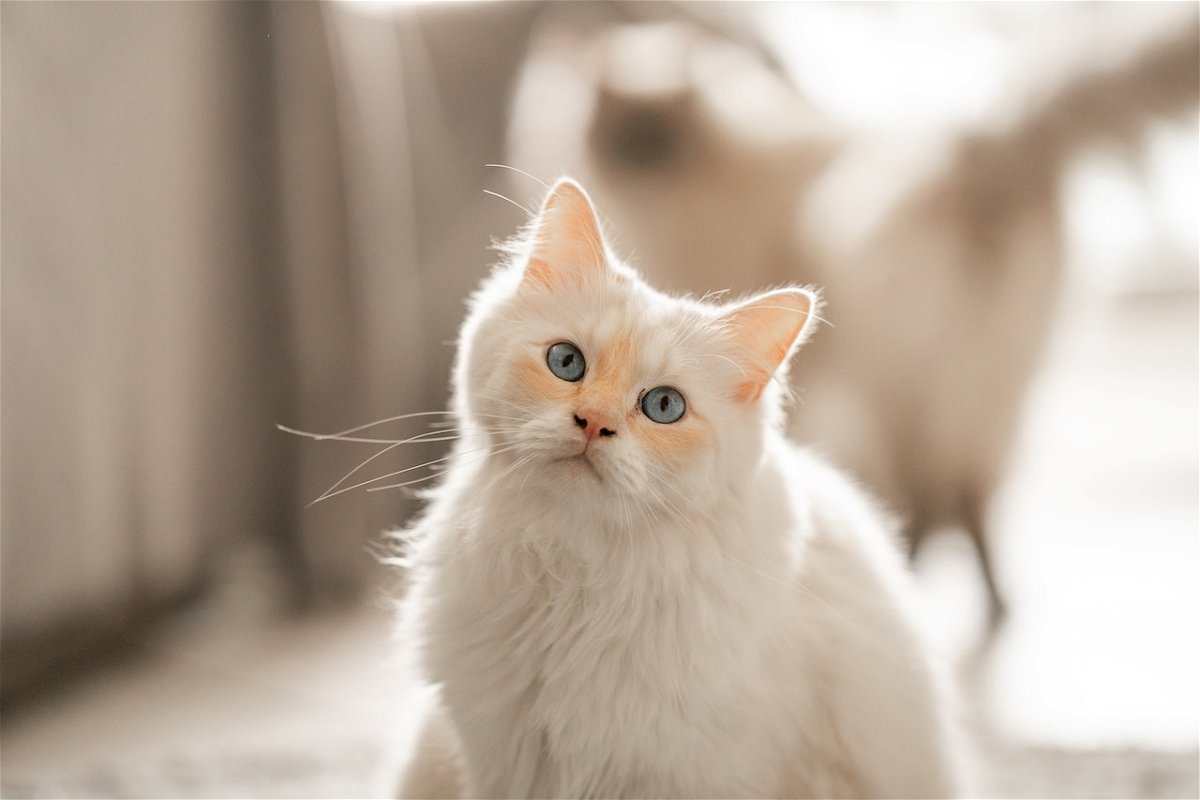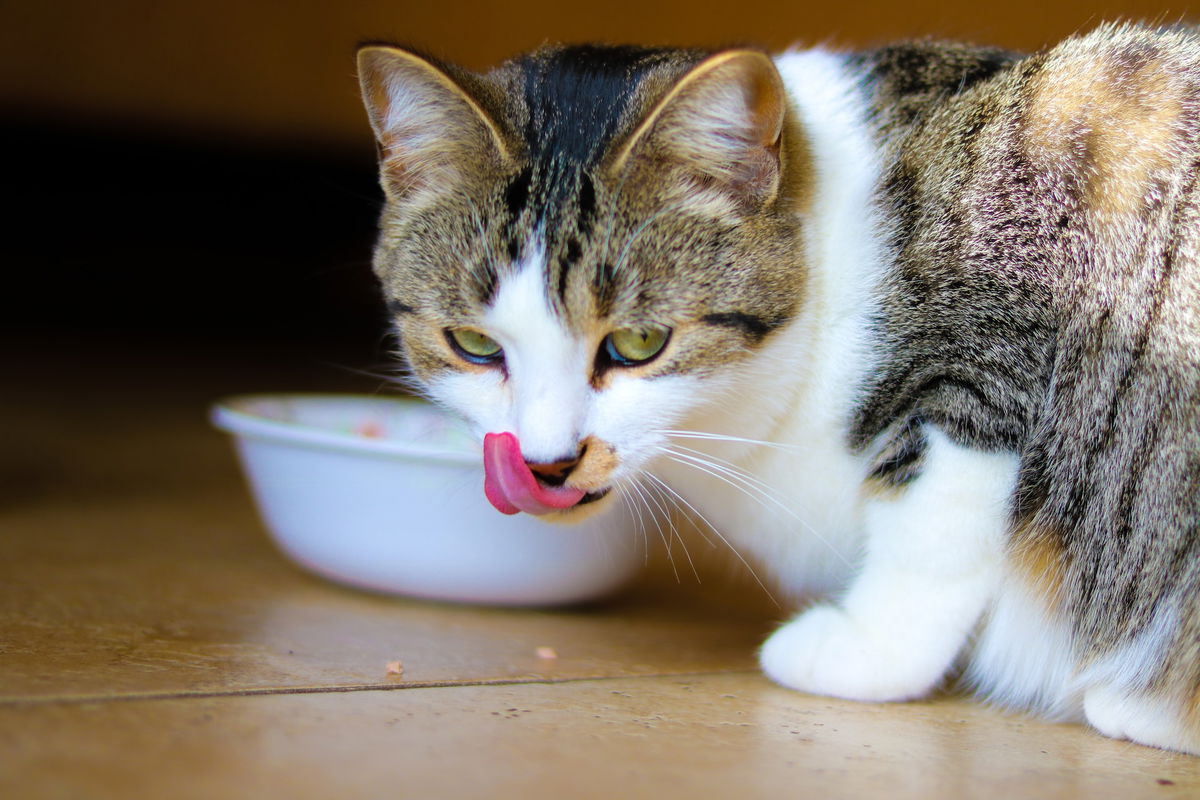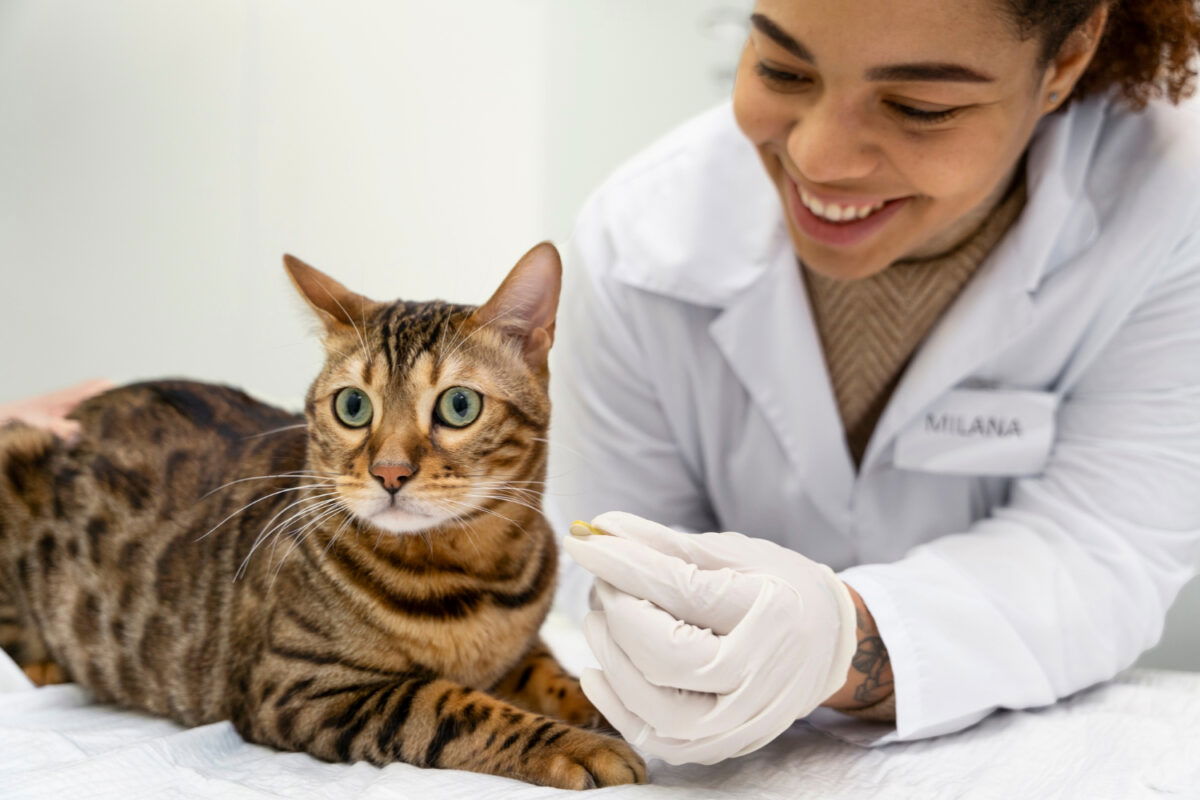We're an affiliate
We hope you love the products we recommend! Just so you know, we may collect a share of sales or other compensation from the links on this page at no additional cost to you. Thank you if you use our links, we really appreciate it!
Most cat owners may be familiar with the experience of their felines throwing up just a few minutes after eating.
It can be discouraging to see your cat expelling undigested food, despite their need for adequate energy and nutrition for their well-being.
But what’s more concerning is that this symptom can indicate an underlying sickness that needs immediate attention.
So, why is your cat throwing up undigested food? You may wonder!
Knowing the possible reasons for this warning sign will help you understand if it’s a harmless occurrence or if it points to a serious underlying issue.
Continue reading this post as we explore the reasons why your cat may throw up undigested meals, and provide practical solutions to address and avoid this problem.
What Is the Difference Between Vomiting and Regurgitation in Cats?
Before we proceed any further, we need to highlight some key differences between vomiting and regurgitation in cats.
Vomiting is an active process that involves the forceful expulsion of food content from the stomach and the small intestines.
The content of vomitus is usually mixed with gastric content and has a characteristic acidic smell, due to the hydrochloric acid in the cat’s stomach.

Regurgitation is a reflexive process that involves the passive expulsion of swallowed food from the esophagus (gullet).
Since regurgitation will typically occur shortly after eating, the expelled content does not have an acidic smell like that of typical vomit.
The other major difference between vomiting and regurgitation in cats involves how the cat behaves before expelling food content.
It’s common for affected cats to show signs of discomfort such as pacing, salivating, licking the floor, lip-smacking, or meowing before vomiting.
Regurgitation, on the other hand, occurs spontaneously without any warning sign of discomfort or upset stomach.
Why Is My Cat Throwing Up Undigested Food? 8 Possible Reasons
There are several reasons that may cause your beloved feline to throw up undigested food, including:
1. Eating too quickly
Cats who gobble up their food in a hurry can ingest air in the process, causing their stomach to get filled with both food and air.
Eating too fast may subsequently cause discomfort and induce your cat to throw up the swallowed food almost immediately.
Your cat may get the urge to eat quickly when they’re anxious or when they eat next to other cats. This is an innate feeling the cat has to clear up the food due to competition.
2. Overeating
If your cat consumes more food than their stomach can hold at a time, they may end up regurgitating some of it to pave the way for digestion.
It’s important to know how much your cat can eat and divide their food into small portions throughout the day instead of offering one large meal.
3. Drinking too much water
Similar to overeating, cats who drink large amounts of water may risk throwing up some food because of the discomfort caused by the already full stomach.
4. Food allergies
Food allergies can cause cats to throw up immediately after feeding because of the body’s intolerance to specific nutrients.
Providing your cat with such foods may cause them to develop a negative reaction in addition to upsetting the stomach.
5. Hairballs in the stomach
Cats are known for their detailed grooming habits. They can spend a better part of the day licking up their coat to remove dirt and straighten fur.
During the grooming process, your cat may lick dead hair and swallow it unknowingly when eating or drinking water.
In most cases, the tiny amounts of ingested fur may pass through the digestive system without causing major problems.
But sometimes the hair might stay in the stomach and accumulate to form hairballs, which can irritate the cat and cause them to vomit.
It is normal for your cat to occasionally spew out hairballs, but you should watch out for symptoms of pain and stress when throwing up.
6. Diet changes
Changing your cat’s feeding schedule or introducing new foods to their diet may cause them to throw up immediately or a few moments after eating.

This is because the new foods can disrupt the cat’s digestive system and cause uneasiness which is solved by vomiting.
Failing to feed your cat at the right time can also cause them to eat up a meal with haste, increasing their chances of ingesting air and vomiting.
7. Gastritis
Your cat may throw up moments after eating because they consumed something toxic that caused an inflammation of their stomach lining.
You can suspect gastritis if your cat’s expelled gastric content is laced with blood, froth, or bile (yellowish or greenish fluid made in the cat’s liver).
Other clinical signs of this condition include dehydration, loss of appetite, dark tarry poop, lethargy, and low moods.
8. Esophagus Diseases
Feline esophagus diseases such as esophagitis, cancer, dysmotility, strictures, and diverticula can cause your cat to regurgitate food due to discomfort when swallowing.
Should I Be Worried If My Cat Throws Up Her Food?
Sometimes you need to be worried when your cat throws up while at other times there’s no cause for concern.
Occasional vomiting is a common symptom in cats which may not indicate anything serious to warrant your concern.
If your cat throws up without appearing lethargic or forcing the content out of their stomach, then this could be one of those normal vomiting episodes.
On the other hand, if your cat’s vomiting is accompanied by other signs of upset stomach or pain, then you have a reason to be worried.
Additional symptoms such as diarrhea, nausea, lethargy, loss of appetite, and behavior change can indicate serious underlying conditions that need immediate action.
You should get worried if your cat is throwing up her food multiple times a week or daily, with or without showing other symptoms.
We recommend you book an appointment at your vet’s office for a quick diagnosis and prompt treatment. Your vet may advise you to carry the vomit sample for testing.
What To Do If the Cat Throws Up Undigested Food Regularly
You need to take a proactive approach and help your cat reduce the chances of throwing up food after eating.
If your cat is throwing up more than once a week without any other sign of stomach upset, you can try using a puzzle feeder to slow down their rate of ingesting food.
Using a puzzle feeder has another added advantage for stimulating your cat mentally before eating, making them engaged and happy.
If your cat’s vomiting is caused by hairballs, you can help them by gliding through their coat with a slicker brush to pick up dead hair, which could have otherwise been ingested.
You can also use over-the-counter supplements, with the approval of your vet, to prevent the formation of hairballs in the stomach.
In the case of new foods, we suggest introducing them over a period of two weeks. You can start with a small amount of the new diet and gradually increase it as you watch for the reactions.

If your cat is diagnosed with esophagus diseases, your vet may recommend using elevated food and water bowls to reduce the strain on your cat’s neck while eating.
You can also warm up your cat’s food to room temperature since this can help reduce the muscle strain on the esophagus while the cat is eating.
How To Prevent a Cat from Vomiting Undigested Food?
One of the best ways of ensuring your cat doesn’t throw up shortly after eating is by ensuring you adopt a high-quality cat-specific diet, instead of mixing up different types of foods.
Stay away from foods that may cause allergic reactions to your cat. Feel free to ask your vet nutritionist for a recommendation on a tailored diet for your cat’s nutritional needs and conditions.
Make sure you are familiar with cat-toxic houseplants and avoid them completely if you’re looking forward to growing some indoor plants.
After getting the right foods for your cat, we advise you to portion it into two or three feeding sessions throughout the day.
Don’t forget to leave room for snacking, which should be deducted from the cat’s daily food portion to prevent overfeeding.
Frequently Asked Questions (FAQs)
1. Why is my cat throwing up undigested food hours after eating?
Vomiting undigested food hours after eating could be a sign that your cat ingested toxic substances that caused an upset stomach or gastrointestinal issues.
2. Why is my cat throwing up undigested food every day?
Daily vomiting of food bolus is a clear sign that your cat is having an underlying problem. This could be anything from medical issues such as gastritis or other issues such as overeating.
This could also indicate that your cat is intolerant to specific foods, causing significant changes in their digestive functions.
3. Why is my cat throwing up undigested food but acting normal
This shows that your cat is experiencing normal regurgitation, which should not cause a serious concern.
Passive regurgitation is typically a simple expulsion of undigested food, and it may be triggered by overeating or eating too quickly.
Conclusion
There are several reasons that may cause your cat to throw up undigested food ranging from rushed eating to serious conditions like inflammation of the stomach lining.
For the most part, occasional regurgitation of food is typical in cats and it should not cause you a reason to be troubled.
If your cat is puking with pain while showing other symptoms such as concurrent diarrhea, lethargy, loss of appetite, blood in vomitus, or stool, we recommend scheduling a visit to the vet’s office.
Your vet will do both invasive and non-invasive diagnostic tests, to determine the underlying cause of your cat’s condition.
In rare cases, your vet may recommend swallow studies, which involve the use of contrast dyes in sedated animals to monitor the movement of food across the GI tract using X-rays.
Laura is the founder of Furs'n'Paws. She is a also a pet writer and expert with more than 20 years of experience of working with dogs and cats. She developed a very strong love for animals at a young age. Her passion led her to establish a thriving pet sitting and dog walking business in Dubai. As an expert in pet training, behavior, and nutrition, Laura is committed to helping pet owners and pet lovers by offering high-quality information on a wide range of topics.



No responses yet